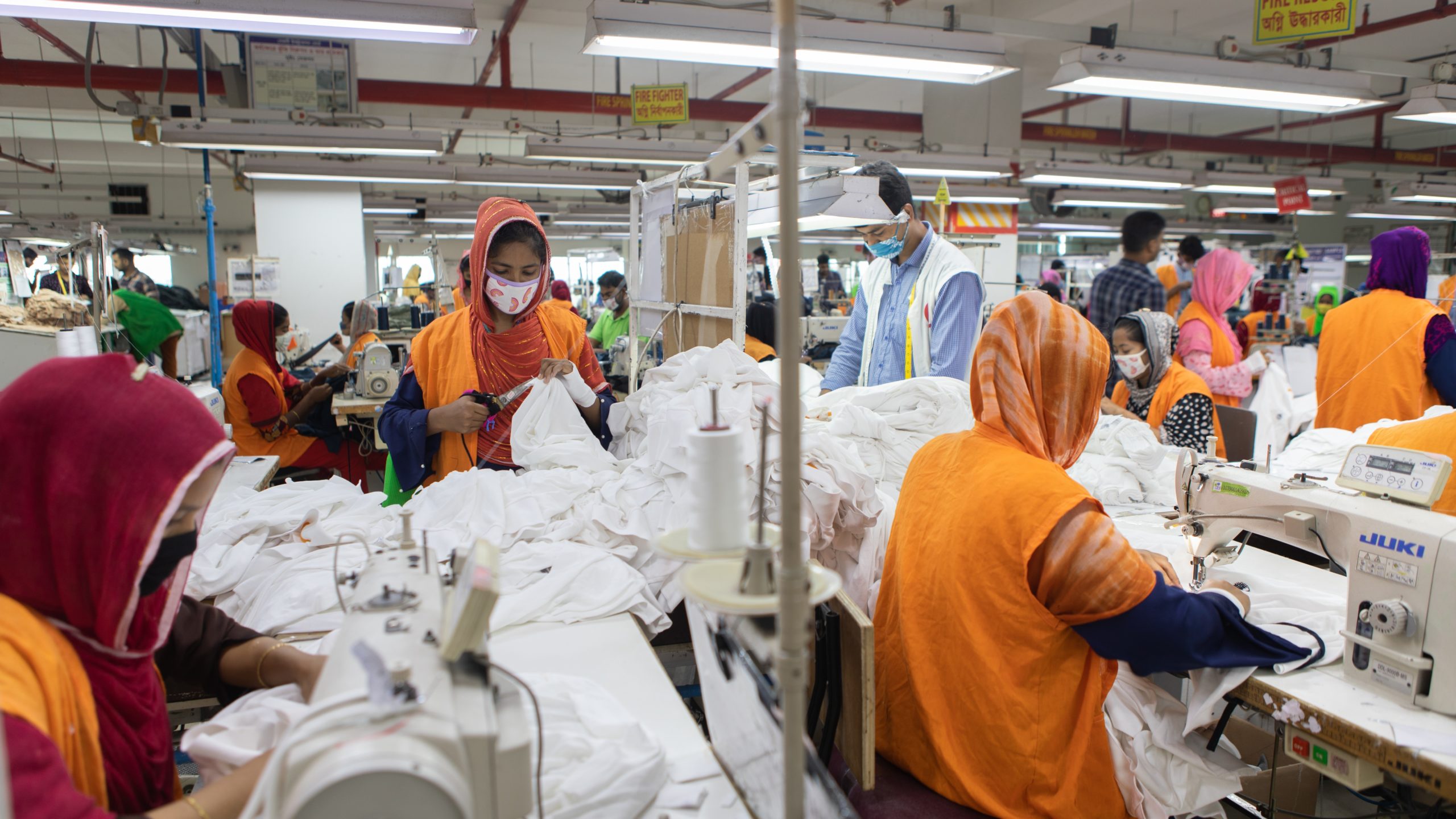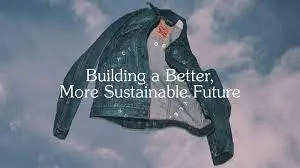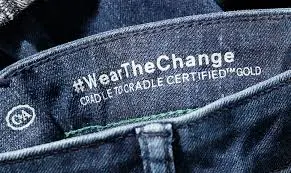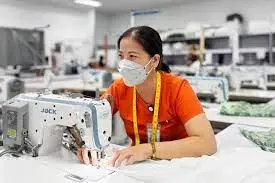GET IN TOUCH
- Please wait...

To thrive in the ever-evolving 21st-century global economy, companies must navigate a myriad of dynamics, with consumer preferences and investor priorities standing out as key drivers. Apparel brands are no exception to these dynamics. Over the past decades, both consumers and investors have become increasingly socially conscious and responsible, placing sustainability and well-being at the forefront of their considerations.
Climate change has indeed emerged as a pivotal issue, not only in the environmental realm but also in the political and social dimensions. There is a growing expectation for companies to adopt environmentally friendly practices as a means to mitigate their carbon footprint. In this era of heightened environmental awareness, businesses are increasingly being held accountable for their impact on the planet. This heightened awareness has brought the substantial environmental impact of the apparel sector into heavy scrutiny.
Brands within this industry are actively responding to this paradigm shift by gradually reshaping their brand visions. However, this adjustment goes beyond merely reacting to market dynamics; it represents a strategic alignment with the evolving expectations of conscious consumers and investors.
Consumers are becoming more discerning and increasingly aware of the environmental and social implications of their choices. The shift towards ethical consumption is particularly pronounced among Generation Z, whose consumer behavior is anchored in strong ethical considerations. This generation, born between the mid-1990s and early 2010s, exhibits a notable trend where they expect brands to go beyond just delivering products and services – they want companies to “take a stand.” About 65 percent try to learn the origins of anything they buy—where it is made, what it is made from, and how it is made (McKinsey, 2018).
As apparel companies incorporate sustainability and well-being into their brand visions, they not only meet the changing preferences of their customer base but also position themselves as responsible and conscientious players in the market. This strategic move reflects a broader industry-wide commitment to addressing environmental concerns, signaling a transition toward more mindful and environmentally friendly practices within the apparel sector.
With Bangladesh being the second largest exporter of apparel in the world, it is important for us to understand what shifts are occurring in the apparel industry globally, what is causing them, and what we must do to best align ourselves with the changes.
As Bangladesh stands as the world’s second-largest exporter of apparel, it becomes imperative for us to comprehend the ongoing shifts in the global apparel industry. By gaining insights into the dynamics shaping the industry on a global scale, we can proactively position Bangladesh to navigate and capitalize on these shifts. This strategic foresight will not only fortify our competitiveness but also ensure that we remain agile and adaptive in a rapidly evolving global market.
The fashion industry, worth USD 2.4 billion, carries a substantial carbon footprint, posing a significant threat to the planet’s future if left unaddressed.
Globally, the environmental impact of the fashion industry is alarming, contributing to 2-8% of greenhouse gas emissions, generating 20% of global wastewater, and releasing 35% of microplastics into the ocean, as per the Ellen MacArthur Foundation. Presently, an average person consumes approximately 68 garments annually, resulting in an astonishing global consumption of 80 billion items (The Wall Street Journal, 2019).
With the anticipated population growth, global garment production is projected to surge by 63% by 2030 (Ellen MacArthur Foundation), potentially leading to a drastic 50% increase in greenhouse gas emissions.
The alarming statistics highlighting the environmental impact of the fashion industry have instigated a heightened sense of awareness among consumers. Recent trends underscore a perceptible shift in consumer consciousness, propelling them to scrutinize and make informed choices about the products they purchase.
A study conducted by Bain and Co. unveiled that a substantial 64% of global consumers express deep concerns about environmental sustainability. Furthermore, consumers are displaying an enhanced mindfulness regarding the intricate production processes associated with the products they opt to purchase. This transformative evolution in consumer behavior has paved the way for several discernible trends:
The evolving consumer preferences in the fashion industry have precipitated a notable shift in trends, compelling brands to realign their visions to better resonate with changing values.
Over the past few years, leading apparel brands globally, including industry giants such as H&M, Zara, Levi’s, Primark, and C&A, have undergone a significant transformation in their brand visions. This shift reflects a responsiveness to the evolving needs and expectations of their customers and stakeholders. They have proactively embraced sustainability, innovation, diversity, and social responsibility as integral components of their visions, signaling a commitment to making a positive impact on the world through their business practices.
A lot of the changes are also being expedited due to the policy changes in the European Union, such as Carbon Border Adjustment Mechanism, and Due Diligence Laws. The EU’s Green Deal, a comprehensive initiative for climate neutrality, introduces a carbon tax on imports, while the Due Diligence Act (HREDD) encourages responsible business practices. The CBAM, set to be implemented in October 2023, further incentivizes global adoption of robust carbon pricing policies. This concerted effort reflects a commitment to creating a positive impact on the world through sustainable and socially responsible business strategies.
The following section elaborates on the visions set by major global apparel brands.
With more than 5,000 stores in over 74 markets, H&M is the world’s largest fashion retail brand in terms of presence. The company aspires to spearhead a global transformation toward a more circular and climate-positive fashion landscape, all while upholding principles of fairness and equality within its operations.
H&M wants to create fashion that is good for people and the planet, using only recycled or sustainably sourced materials, while reducing its environmental footprint and contributing to positive social impact, respecting human rights, and promoting inclusion and diversity in everything it does.
To achieve this vision, the brand has set ambitious goals and targets, such as becoming climate-positive across its value chain by 2040, having a net-positive impact on biodiversity, scaling circular models and systems for its products, supply chains, and customer journeys, and being a fair and equal employer and partner.

Aligned with the Paris Agreement, H&M is dedicated to a 50% reduction in emissions by 2030 and achieving net-zero impact by 2040, supporting the global mission to limit temperature increase to 1.5°. Specific measures include a 30% reduction in freshwater use and achieving 100% recycled or sustainably sourced materials by 2030.
It has also launched several initiatives and programs to support its vision, such as the H&M Sustainable Cotton Programme, the H&M Conscious Collection, the H&M garment collection program, the H&M Foundation, and the H&M x Ellen MacArthur Foundation collaboration.
Additionally, the brand invests in eco-friendly technologies that will aid in decarbonization of their business. Aiming to bridge the gap between business goals and climate ambitions, their green investments are geared towards sustainable fabric production.

Zara is the flagship brand of the Inditex Group, the world’s largest fashion retailer in terms of sales, with more than 2,200 stores in 96 markets. Its vision is to create a sustainable fashion industry by promoting responsible consumption and production, respecting the environment and people, and contributing to the communities in which it operates. The company believes that sustainability is not only a social and environmental necessity but also a business opportunity and a source of innovation and differentiation.
In pursuit of its vision, Zara has embraced a comprehensive strategy that spans the entire life cycle of its products. This approach encompasses various stages, from design and sourcing to manufacturing, distribution, sales, use, and eventual reuse or recycling.
The brand has implemented a range of actions and measures to align with its vision, including the incorporation of organic, recycled, or sustainable materials, reductions in water and energy consumption, and the mitigation of greenhouse gas emissions. Zara has also committed to eliminating hazardous chemicals and waste, enhancing working conditions and labor rights, supporting social and environmental causes, and expanding sustainable choices and services for customers. Notable initiatives include the Zara Join Life Collection, the Clothing Care Guide, and the Garment Recycling Program.
Levi’s, a denim brand with a heritage spanning over 150 years and a global presence in more than 110 countries, is committed to making sustainable fashion the norm. Their vision revolves around creating durable products, enhancing aesthetics, and minimizing environmental impact. Additionally, Levi’s aspires to be a positive force by supporting meaningful causes and communities that resonate with both customers and employees.

The company has strategically crafted a sustainability framework encompassing four key pillars: products, planet, people, and profits. To mitigate its carbon footprint and water usage, the brand is dedicated to achieving net-zero status by 2050.
Levi’s has implemented various initiatives aligning with this vision, including the utilization of recycled, organic, or regenerative materials exemplified by the Levi’s Wellthread Collection, Water<Less Technology, and Cottonized Hemp Fabric.
Levi’s also places a strong emphasis on improving the lives and livelihoods of those involved in the production process. Initiatives like the Worker Well-Being Program, Tailor Shop, and Levi’s Collaboratory underscore their commitment to social responsibility. Furthermore, the company actively champions social justice and equality through initiatives like the Pride Collection. Engaging customers and stakeholders in their sustainability journey is another facet of Levi’s approach, evident in programs such as the SecondHand Program and the Care Tag for the Planet.
Primark, a prominent international clothing retailer with over 380 stores across 15 countries, has strategically shifted its emphasis towards making sustainable fashion accessible to all. The brand’s commitment involves transforming the way its garments are produced without altering its affordable pricing, thereby empowering everyone to make more sustainable choices while shopping. Primark also aims to curtail fashion waste, cut carbon emissions throughout its value chain, and enhance the well-being of its product makers.

In pursuit of this vision, Primark has introduced an extensive sustainability strategy named Primark Cares, concentrating on three pivotal pillars: design, production, and reuse and recycling.
The brand has undertaken various initiatives to bring this vision to fruition, including the utilization of more recycled or sustainably sourced materials, exemplified by its Sustainable Cotton Programme and recycled materials collection. Resolute in supporting the shift towards a low-carbon economy, Primark participates in initiatives like the Science-Based Targets Initiative and its Renewable Energy Commitment.
C&A, a Dutch multinational fashion retailer boasting over 1,400 stores across 18 countries, envisions fostering positive change within the fashion industry. The brand strives to bridge the gap between consumers and producers who champion body, planet, and a “better fashion” movement. Additionally, C&A aspires to normalize sustainable fashion by offering high-quality, affordable, and stylish products that are both environmentally friendly and beneficial for people. C&A’s initiatives and programs are structured around four main areas: products, supply chain, environment, and society.

The company has undertaken various endeavors to realize its vision, including the use of organic, recycled, or certified materials showcased in collections such as the Bio Cotton Collection, Recycled Polyester Collection, and Cradle to Cradle Certified Collection.
Improving transparency and traceability in its supply chain is evident through initiatives like the Supplier Code of Conduct, Supplier List, and focus on the Fashion Transparency Index. C&A is committed to reducing its environmental footprint and enhancing circularity, as demonstrated by the Circular Fashion Commitment, C&A Green Stores, and the Take-Back Program. The brand also actively contributes to the well-being of the communities where it operates, exemplified by the C&A Foundation and the Employee Volunteering Program.
In recent years, the brand visions of major global apparel brands have undergone a transformative shift, incorporating sustainability, innovation, diversity, and social responsibility as integral components. These brands are driven by a commitment to make a positive impact on the world through their business endeavors. In response to these changes, apparel manufacturers must align themselves with similar values and principles, forging collaborations with these brands to develop products and services that adhere to heightened expectations and standards.
To thrive in this evolving landscape, apparel manufacturers must make strategic investments in new technologies, processes, and practices. These endeavors are essential to enhance efficiency, ensure quality, foster transparency, and mitigate environmental and social risks. By embracing such initiatives, apparel manufacturers not only contribute to supporting the brand vision of leading apparel companies but also elevate their own competitiveness and reputation within the global fashion industry.
As the second-largest global exporter of apparel, contributing USD 46.99 billion in exports during the fiscal year 2022-23, Bangladesh plays a pivotal role in the garment industry. Often recognized as the “garment factory of the world,” Bangladesh serves as a primary sourcing hub for numerous international brands. However, amidst shifting consumer preferences and the evolving brand visions of major apparel buyers, manufacturers in Bangladesh face the imperative of adapting their product offerings to sustain competitiveness in the market.
Recognizing that enhancements to the current production procedures may increase production costs, striking a balance between securing better prices for production and remaining competitive becomes paramount. To align with the brand visions established by leading apparel companies, Bangladeshi manufacturers should thoughtfully consider the following strategies:
Bangladesh’s apparel industry has historically relied on low-tech manufacturing, with only 15% of processes being mechanized. In contrast, other countries like China, Vietnam, Turkey, India, and Cambodia are increasingly emphasizing high-tech manufacturing.
For Bangladesh to evolve, embracing cutting-edge technologies is crucial. Integration of innovations such as 3D design, automation, RFID, blockchain, and sustainable materials can enhance efficiency and reduce environmental impact. The use of blockchain for transparent supply chain management aligns with consumer expectations for sustainability and transparency.

Investing in research and development is essential to create innovative, value-added products that meet the evolving preferences of global consumers.
Fostering a culture of innovation and technological advancement within the apparel industry is vital. This involves adopting automation, refining manufacturing processes, and improving product quality to meet the stringent requirements of international buyers.
However, with thin profit margins, manufacturers face challenges in allocating capital and resources for innovation and R&D. Brands can play a crucial role by facilitating manufacturers’ embrace of sustainable innovation through grants or incentives.
Diversifying product offerings is a crucial strategy for aligning with global sourcing trends. Manufacturers need to adapt their product portfolios to seize opportunities in value-added products. Exploring the production of sustainable and high-quality clothing enhances competitiveness and meets the expectations of environmentally conscious consumers.
Consideration of transitioning to man-made fiber-based apparel, utilizing cellulose-based or recycled materials, not only supports sustainability but also taps into markets prioritizing eco-friendly and innovative textiles.
Moreover, manufacturers should explore entering emerging markets in Africa, South Asia, and South America. This move will help reduce Bangladesh’s dependence on a single market, given that over 50% of all apparel exports currently go to the EU. Diversification into new markets provides resilience against economic uncertainties and expands the reach of Bangladesh’s garment industry.
Investing in infrastructure and logistics is vital to reduce operational costs, enhance sustainability, and minimize response times. Addressing improvements highlighted by the World Bank’s Logistics Performance Index can create a more efficient and environmentally friendly supply chain, further positioning Bangladesh as a competitive sourcing destination.
The integration of automation in the apparel industry presents both potential advantages and challenges. Automation has the capacity to replace specific tasks, leading to potential workforce displacement. Consequently, workers must adapt by acquiring new skills through reskilling initiatives to align with this evolving landscape.
Reports from a2i suggest that around 60% of garment workers may face unemployment by 2030 due to automation, with a disproportionate impact on women workers and a potential erosion of their bargaining power.
On the positive side, automation can enhance efficiency and productivity, resulting in increased output and shorter production cycles. However, it does not necessarily guarantee higher wages or job security, especially for female garment workers who are at risk of job loss. To navigate this changing landscape, there is a critical need to prioritize the development of a highly skilled workforce capable of operating and maintaining automated systems.
Achieving this goal requires strategic investments in training and skill development to bridge existing gaps and prepare the workforce for evolving roles. Moreover, market-driven efforts are essential to challenge prevailing perceptions about women workers’ capabilities and their readiness to engage with advanced equipment.

Effectively addressing these challenges and capitalizing on the opportunities presented by automation is crucial for ensuring the long-term sustainability of the apparel industry in Bangladesh. Continuous upskilling initiatives are a priority to enable the workforce to adapt to new technologies and foster innovation.
Public-private collaboration for workplace training can expedite skill acquisition, ensuring a skilled and adaptable workforce. Specialized skills development in industrial zones through collaborations with post-secondary institutions and skills training providers can further enhance workforce capabilities.
Bangladesh boasts the highest number of green factories, with over 200 LEED Certified factories as of 2023, setting an example for global sustainability practices. Despite these commendable strides, the country faces challenges in fully integrating circular economy principles. Limited urban landfill capacity, deficiencies in hazardous waste disposal, and the absence of comprehensive incentives and guidelines for cleaner production pose obstacles. Effective monitoring of factory compliance, policy implementation, and best practice enforcement are also critical areas for improvement.
Embracing circular economy principles is imperative for ensuring the long-term sustainability of the apparel industry. This involves optimizing resource utilization and addressing global waste concerns. Advocating for mandatory eco-design guidelines for textile and apparel products is a critical step, necessitating manufacturers to consider the entire lifecycle of their products.
Sustainable sourcing practices, coupled with lean manufacturing principles to reduce waste and enhance efficiency, are essential components of this transformation.
Textile waste management is a key aspect of circularity and sustainability. Shifting from linear models to strategies focusing on waste reduction, recycling, and material reuse is essential. Innovative approaches such as reusing scraps, promoting circular fiber use, and improving recycling policies can contribute to the development of the textile recycling sector in Bangladesh. This holistic approach aims to reshape the industry’s practices, promoting environmental responsibility and long-term resilience.
Despite the significance of sustainable practices, their adoption often presents financial challenges for manufacturers. The lack of guaranteed improved prices from brands makes it challenging to build a compelling business case.
Collaboration between brands and manufacturers is essential to find ways to compensate or incentivize manufacturers to embrace sustainability. Government involvement, through monetary incentives or other supportive measures, plays a pivotal role in facilitating the green transition. A united effort among brands, manufacturers, and government support is crucial for the successful adoption of sustainable practices in the apparel industry in Bangladesh.
The apparel industry has played a pivotal role in empowering women in Bangladesh, providing the first paid job in the formal sector for 94% of women workers, compared to 64% of male workers (ILO, UN Women). This sector, employing around 60% women, has been a catalyst for significant socioeconomic progress over the last decades. Women workers, who typically spend more on their family’s education expenses, have gained greater autonomy in decision-making due to increased economic capacity.
While the industry has made strides in standardizing mother and child care facilities, establishing Fair Price Shops, and adopting innovative TVET programs, challenges persist in terms of worker well-being. Instances of gender-based discrimination and the strenuous nature of the work leading to long-term health issues remain concerns. Women face obstacles in upskilling due to disparities in education levels, and there is a lack of a seamless transition mechanism for workers.
Ensuring fair wages and establishing clear career progression paths are crucial for promoting employee well-being and satisfaction. Manufacturers prioritizing fair wages experience lower turnover rates, reducing hiring and training costs and enhancing overall productivity.
In recent years, notable commitments from major brands like H&M Group and G-Star Raw have been witnessed in support of the Bangladeshi apparel industry. These brands have pledged to purchase Bangladeshi apparel at higher prices, aiming to offset the recent labor wage increase implemented in 2023. This strategic move is geared towards ensuring fair and decent wages for Ready-Made Garments (RMG) workers in Bangladesh.
Such initiatives by globally recognized brands not only reflect a commitment to ethical sourcing but also contribute to the socio-economic well-being of the workers in the Bangladeshi apparel sector.
Bangladesh has a significant role to play in the global apparel industry’s transition toward more sustainable and responsible practices.
The key to this transition lies in Bangladeshi manufacturers embracing innovation, sustainability, inclusivity, and community empowerment. Aligning with the evolving brand visions of leading apparel companies is paramount for securing a brighter and more sustainable future for the industry.
A collective approach among brands is also essential to address the holistic needs of workers, focusing on their well-being. The imperative for change is clear, and the apparel industry in Bangladesh has the opportunity to lead the way in fostering positive social and environmental impacts.
Mrinmoy Sobhan, a Business Consultant at LightCastle Partners, has prepared the write-up. For further clarification, contact here: [email protected]
Our experts can help you solve your unique challenges
Stay up-to-date with our Thought Leadership and Insights